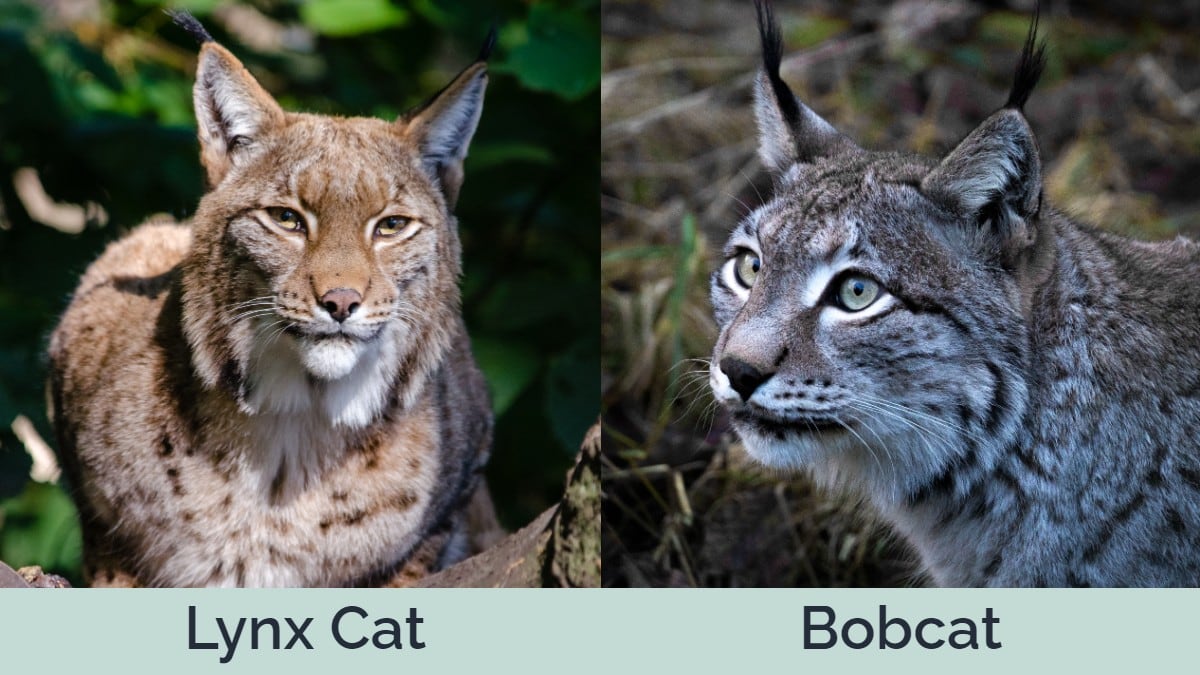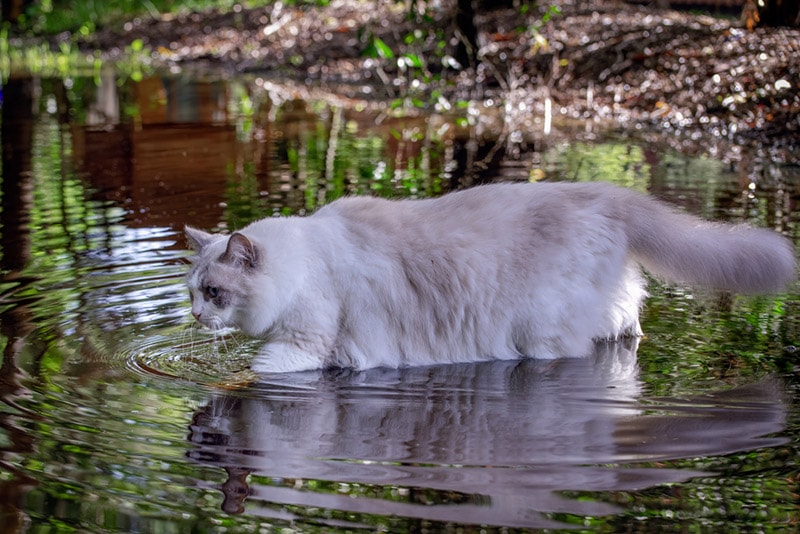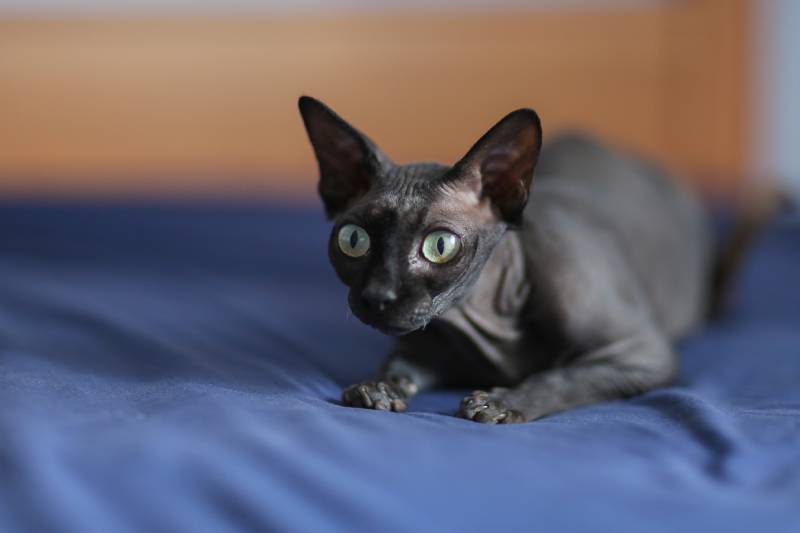Lynx vs Bobcat: How Do They Differ? (With Pictures)

Updated on
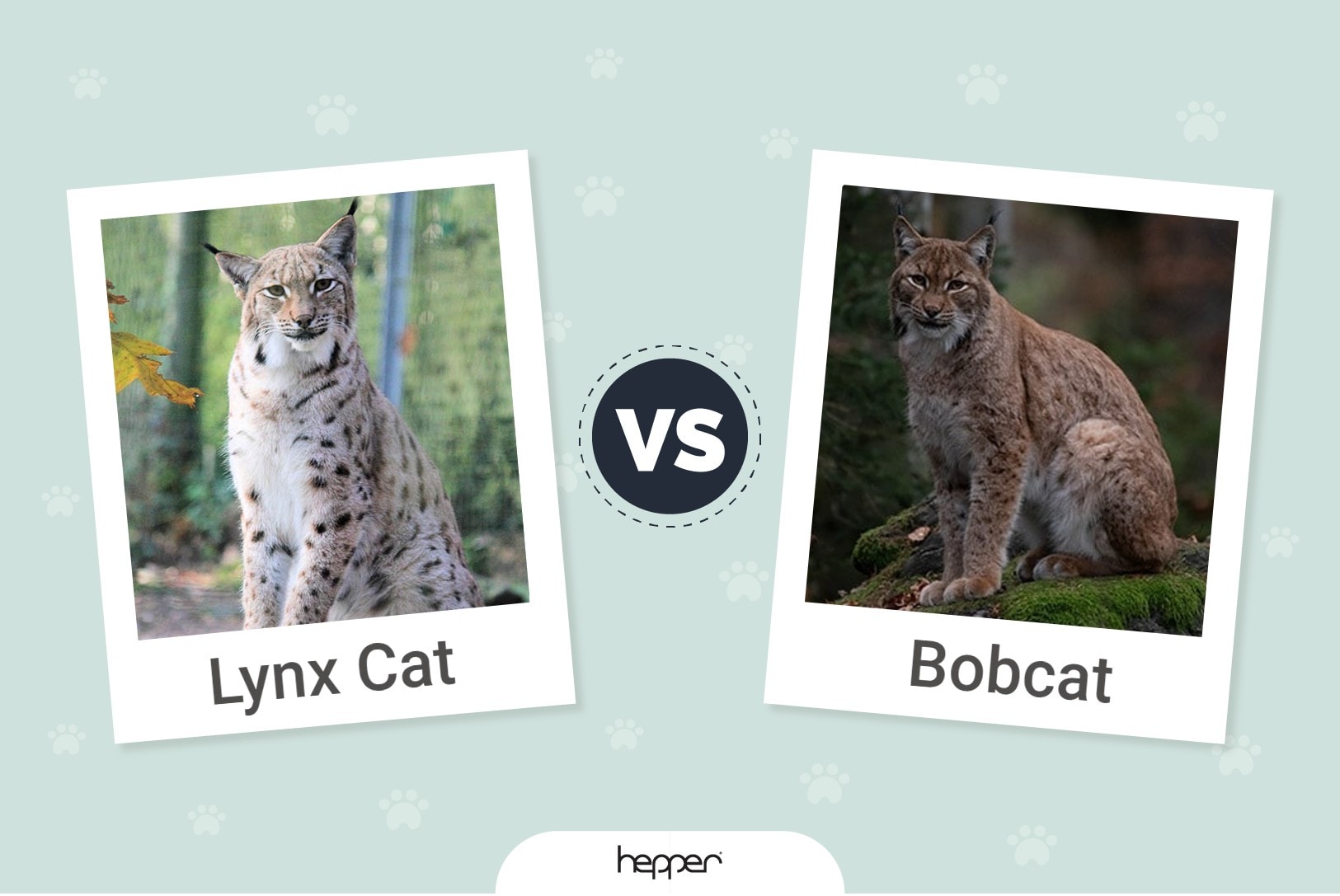
Do you know the difference between a lynx and a bobcat? Many people don’t, but they are quite different animals. This post will compare and contrast these two animals, with pictures to help illustrate the differences. We’ll start with their physical characteristics, then move on to their behavior and diet. By the end of this post, you’ll be an expert on lynx vs bobcats!
Visual Differences
At a Glance
- Origin: Europe, Asia, and North America
- Size: Males average 30 pounds, females average 28 pounds
- Lifespan: 12-16 years
- Domesticated?: No
- Origin: North America
- Size: Males average 15 pounds, females average 12 pounds
- Lifespan: 12-16 years
- Domesticated?: No, but some states allow bobcats as pets
Lynx Overview
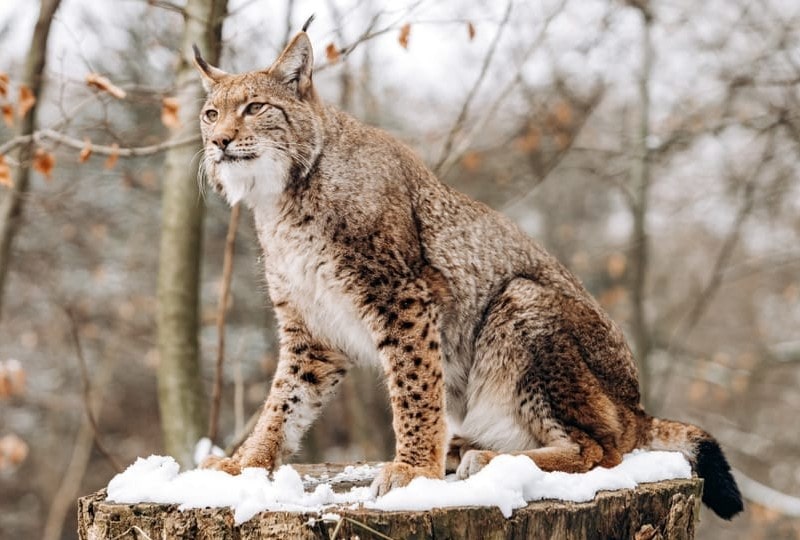
Characteristics & Appearance
The first thing you’ll notice when looking at a lynx and a bobcat side by side is their size. The lynx is much larger, with males averaging about 30 pounds. The lynx’s coat is much thicker than a bobcat’s, due to the fact that they live in colder climates. Another difference in appearance is that lynx have black tufts of fur on the tips of their ears.
Behavior & Diet
Lynxes are shy and solitary animals that prefer to spend their time alone. They are mostly active at night and will usually hunt alone rather than in groups. Lynx are carnivores and will typically eat larger animals like deer.
Habitat & Range
The lynx lives in a variety of different habitats, including forests, tundras, and mountains. They can be found in Europe, Asia, and North America.
Bobcat Overview
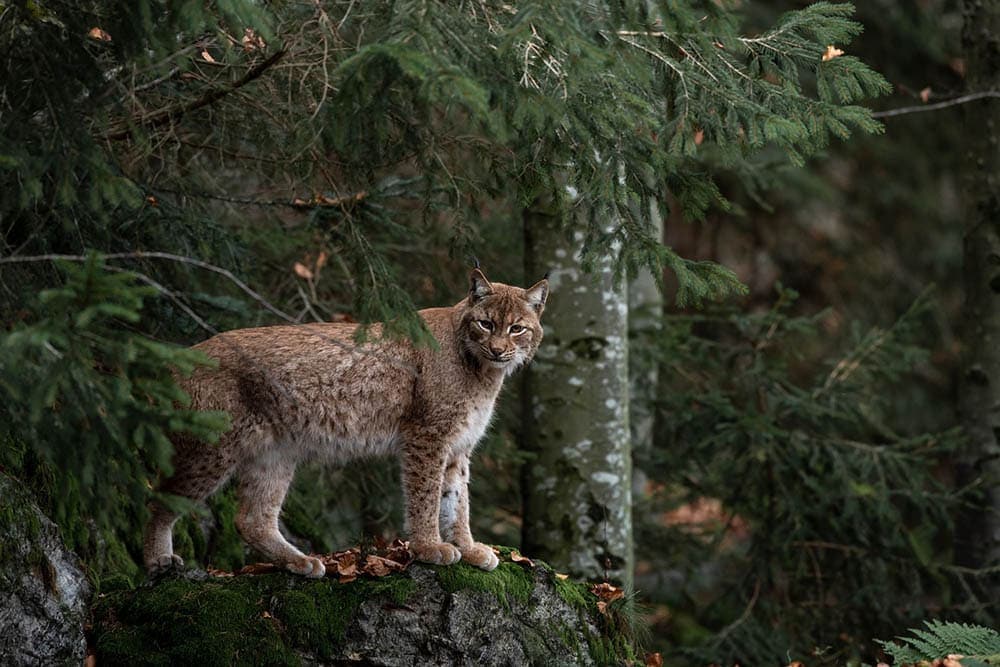
Characteristics & Appearance
Bobcats only weigh in at around 15 pounds. The Bobcat’s coat is shorter and sleeker, which helps them stay camouflaged in their more temperate habitats. Bobcats lack the black tufts of fur on their ears.
Behavior & Diet
Bobcats, on the other hand, are more social creatures. They often hunt in pairs or small groups, and they are just as likely to be active during the day as they are at night. Bobcats are also carnivores, but they tend to go for smaller prey like rabbits.
Habitat & Range
Bobcats also have a wide range and can be found throughout North America. However, they prefer to live in more temperate climates than lynx do.
Numbers in the Wild vs Captivity
There are no reliable estimates for the number of lynxes in the wild. However, it is thought that there are only around 20,000 bobcats living in the wild. This difference is likely due to the fact that bobcats are more adaptable to living in close proximity to humans. As a result, they are much more likely to be found in captivity than lynxes are.
Lynx vs Bobcat: Can You Have Them as a Pet?
The short answer is no. While it is legal to own a bobcat as a pet in some states, it is not possible to have a lynx as a pet. This is because the lynx is protected under the Endangered Species Act, which makes it illegal to own one without a special permit.
What to Do If You See One In the Wild
If you’re lucky enough to see a lynx or bobcat in the wild, the best thing to do is to leave them alone. These are shy animals that prefer to avoid humans, and they can be dangerous if provoked. If you must take a picture, make sure to do so from a safe distance.
What Are the Other Differences Between Lynxes and Bobcats?
In addition to the visual and behavioral differences we’ve already mentioned, there are a few other things that set the lynx and bobcat apart. For one, lynx have much better hearing than bobcats do. They can also see better in low-light conditions. Finally, lynxes are capable of running at speeds of up to 30 miles per hour, while bobcats can only reach speeds of around 20 miles per hour.
Conclusion
In conclusion, there are many differences between lynxes and bobcats. They vary in size, appearance, behavior, diet, and habitat. However, they are both beautiful but secretive animals that are hard to see in the wild. If you do see one, consider yourself very lucky.
Featured Image Credit: (L) Pixabay, (R) milesz, Pixabay
